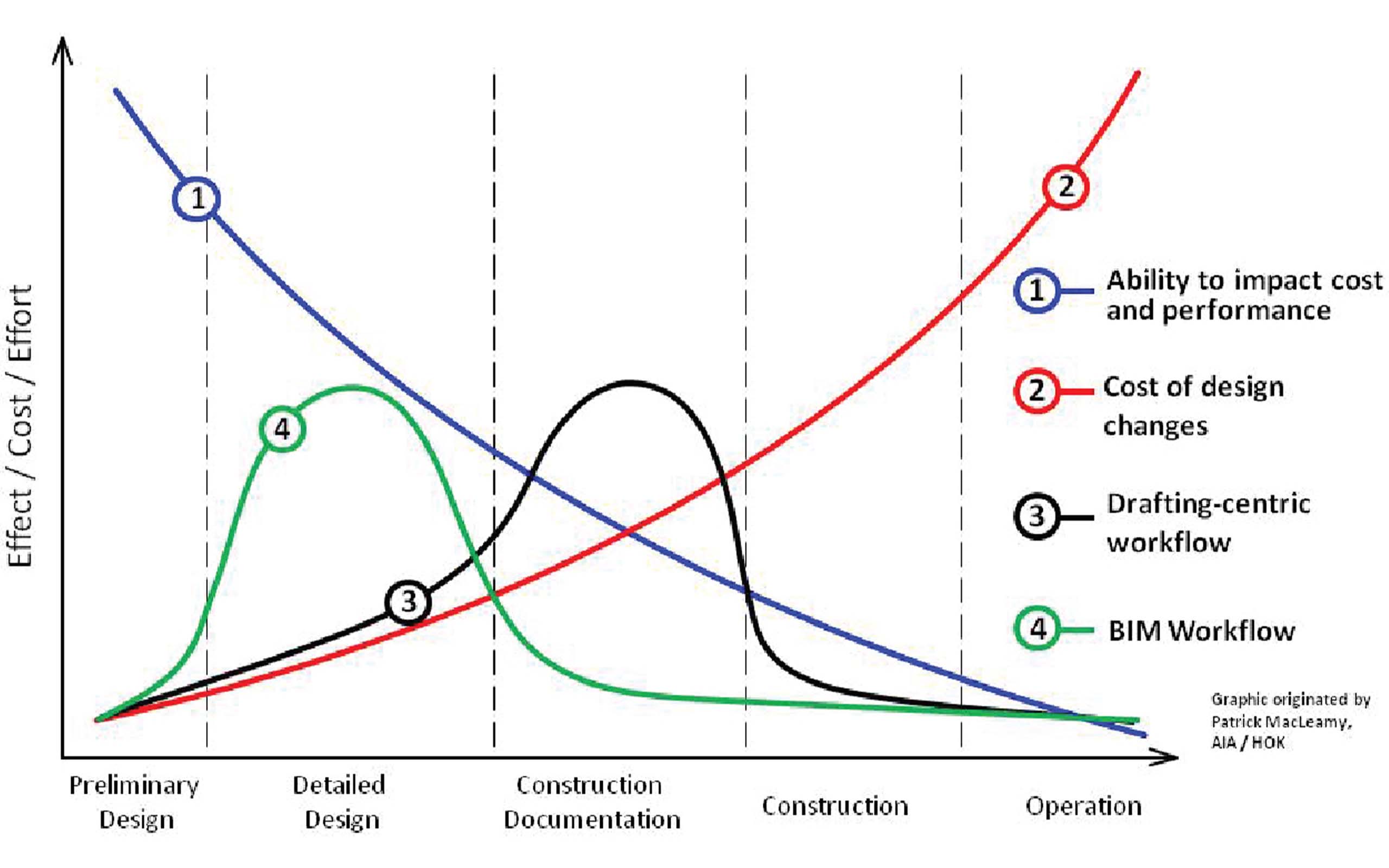We have scoured the internet’s biggest forums, search engine queries, and keywords to find the web’s most asked questions about BIM (Building Information Modelling).

Building Information Modelling (BIM) has shifted from being a modern innovation to becoming a standard requirement in parts of the construction industry. For example, the UK government mandates the use of BIM for centrally procured public projects, and many other countries in Europe and Asia have introduced similar national strategies or requirements. This reflects a broader, worldwide move toward digital methods of designing, constructing, and managing the built environment, with international standards such as ISO 19650 and COBie helping to drive consistent adoption across borders.
If you distil it down to its essence, BIM is an information exchange, communication, and collaborative process. BIM involves using a digital model at all stages of a project – from project concept right through to handover and facilities management.
There are currently 7no. Ds (dimensions) of BIM are used throughout the life-cycle of a project, but AEC professionals recognise them from 3D BIM onwards. 3D BIM modelling is the foundation of any project that follows the BIM process.
The 3D BIM stage involves the geometric 3D modelling of a project containing a high Level of Detail (LOD) and a high Level of Information (LOI). If executed correctly, the digital 3D model will be the foundation of a BIM project and will lead to swifter decision-making from a very early concept design stage right through a project lifecycle, including important clash detection during the construction phase, or prior to it!
The ultimate goal of 3D BIM is to provide the foundation for a ‘digital twin’ of the ‘As Built’.
3D BIM (3-dimensional building information modelling), or a shared informational model, adds an additional “Z-axis” to the existing X and Y-axis. 3D BIM is perhaps the most well-known dimension of BIM. The international standard for Building Information Modelling, ISO 19650:2019, defines BIM as a ‘Use of a shared digital representation of a built asset to facilitate design, construction and operation processes to form a reliable basis for decisions. It is not about creating a 3D model for its own sake, and it is not an add-on process. BIM is fundamental to the way a project is set up and run.’
3D BIM is the process of creating geometrical and non-geometrical information and sharing this information in a common data environment (CDE). This allows participants to manage their multidisciplinary collaboration more effectively in modelling and analysing complex structural problems. 3D BIM centres around the creation of exchange information requirements (EIR), which defines the information that an employer wishes to procure, develop, and operate a built asset. Establishing this in a contract document ensures that appropriate information is created in a suitable format at the right time.
At BIM level 2 (the most recognised level in the AEC sector), building information models are likely to comprise a series of models prepared by different appointed parties, including model files, documents, and structured data files containing non-geometric information about the facility, floors, spaces, systems, and components. Together, these create a federated digital replica of the built asset that begins by representing design intent and then reflects what has been built and installed by handover.
3D modelling forms part of the 7 dimensions of BIM. The BIM dimensions, which refer to the levels of information in each BIM data, are:
While 3D to 7D are the most widely accepted dimensions of BIM, you may also come across mentions of 8D (safety), 9D (lean construction and waste reduction), or even 10D (industrialisation and prefabrication) in industry discussions. These additional dimensions are not yet standardised globally, and their definitions can vary depending on the source.
All the dimensions rely on a 3D geometry to work. However, it’s the amount of data and information that resides inside the geometry that expands the number of dimensions that all the stakeholders participating in the project can use to conduct studies or analysis on the building in the digital environment.
The ISO 19650 standards do not prescribe any specific BIM software, but specific tools must be identified by design teams in the EIR and the BIM Execution Plan (BEP). In practice, a broad range of platforms are commonly used, for example:
Other specialist applications, such as 3ds Max, Blender, Unity, Enscape, or Twinmotion, are more often used for visualisation and rendering rather than as core BIM authoring tools.
To ensure interoperability, many of these platforms support open standards. The Industry Foundation Classes (IFC), now standardised as IFC 4.3 (ISO 16739:2024), are the most widely recognised format for sharing BIM data across disciplines. Other openBIM formats, such as BCF (for issue tracking) and COBie (for asset data exchange), are also frequently used. These standards enable collaboration and consistency across the project lifecycle, regardless of which software a team chooses.
While some platforms hold larger market shares than others, the BIM process is not tied to a single tool. Compliance is achieved through standards and workflows, not through one software provider.
BIM is used across the AEC sector and can significantly improve the delivery and performance of projects while providing a consistent approach that promotes collaboration and innovation.
BIM processes have helped deliver benefits such as monitoring, safety, planning, cost, and many more. It has the potential to deliver further benefits in the operations of small enterprises by establishing standardisation and asset libraries that can be used across design teams.
3D Coordination, also known as Clash Detection, is the process of combining digital models from different consultants to identify and resolve conflicts before construction begins. Traditionally, this has been done in software such as Autodesk Navisworks, which can import multiple file formats and merge them into one comprehensive “federated model.”
In this environment, all the different models are checked against each other to highlight potential issues. For example, a cylinder representing a pipe may clash with a box representing a machine in a 3D environment. Because BIM elements contain rich metadata about ownership and function, the responsible party can be quickly identified and the clash resolved.
In recent years, coordination has expanded beyond standalone tools. While Navisworks remains widely used, many teams now take advantage of cloud-based platforms like Autodesk Construction Cloud, BIMcollab, or Trimble Connect, as well as built-in clash detection features in authoring tools such as Revit and Archicad. These solutions allow clashes to be detected earlier and tracked collaboratively across the project team, rather than being discovered late in construction.
This is reflected in the famous MacLeamy curve: the earlier issues are identified and resolved in a project’s lifecycle, the less costly and disruptive they are to fix. Modern BIM coordination, whether in desktop or cloud environments, helps teams act on that principle, reducing rework, avoiding costly delays, and supporting smoother project delivery.

In general, rework on-site can account for a significant portion of total project costs.
With BIM and 3D visualisation software, it is easy to quickly create a 3D massing model of the initial design concept and overlay it onto accurate site data. This gives the clients a better understanding of the proposed design and allows any adjustments to be made early on before too much time has been spent on the project.
Through Autodesk Revit, a 3D modelling software, you can explore a model in the first person and carry out inspections. The model can be shared in the cloud, allowing people to explore without any technical background in BIM modelling, such as future tenants of a building.
Arguably, the future of 3D BIM is already here. Today, intelligent digital models can be combined with reality capture technologies, such as laser scanning and drones, and processed in the cloud to link collaborative models with physical on-site conditions. This integration forms the foundation of digital twins, allowing assets to be monitored and managed in real time.
The combination of 3D BIM and smart technologies like artificial intelligence is also a growing trend. AI and machine learning are increasingly used for tasks such as predictive clash detection, automated risk forecasting, and data-driven project planning. By analysing large datasets, these tools help teams test options more quickly and support informed decisions at earlier project stages.
3D BIM is also evolving through its integration with immersive technologies such as virtual reality (VR), augmented reality (AR), and extended reality (XR). These tools allow stakeholders to step inside a project, review designs at full scale, and even conduct remote site walkthroughs. This immersive approach, accelerated in part by the pandemic, is now becoming a standard way to engage clients, investors, and design teams.
Beyond visualisation, BIM continues to expand into areas such as sustainability analysis and modular or prefabricated construction, where data-driven models support energy simulations, carbon assessments, and off-site precision manufacturing. Together, these developments show that BIM is no longer just about 3D modelling, but about creating a connected digital ecosystem that supports collaboration, efficiency, and informed decision-making across the entire lifecycle of the built environment.

3D BIM remains the focal point for the digitalisation of the AEC sector. As outlined, the capability to create an intelligent digital 3D model that stores information will be used for years to come by all the participants in the process, such as architects, engineers, surveyors, and owners, to make informed decisions.
New technologies continue to create opportunities and will result in significant value and return on that investment. Initially, 3D BIM requires time to be implemented and absorbed.
It is also important to note that good input/creation = good output. Making sure that 3D BIM models are created properly (whether in-house or through a 3D BIM consultant such as ourselves at 3DDB) will lead to better BIM experiences on projects. Also, selecting the appropriate hardware and software for BIM implementation and allowing for compatibility and interoperability with the rest of the industry are real-world challenges to be fully ironed out. That said, we are getting there.
It’s an exciting period for 3D BIM as we change the way to design and build our cities of the future, in the real world AND in the digital world, both of which will continue to become more interconnected.
Thank you for your message. It has been sent.